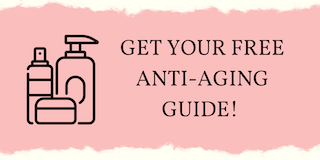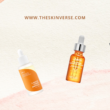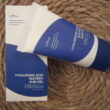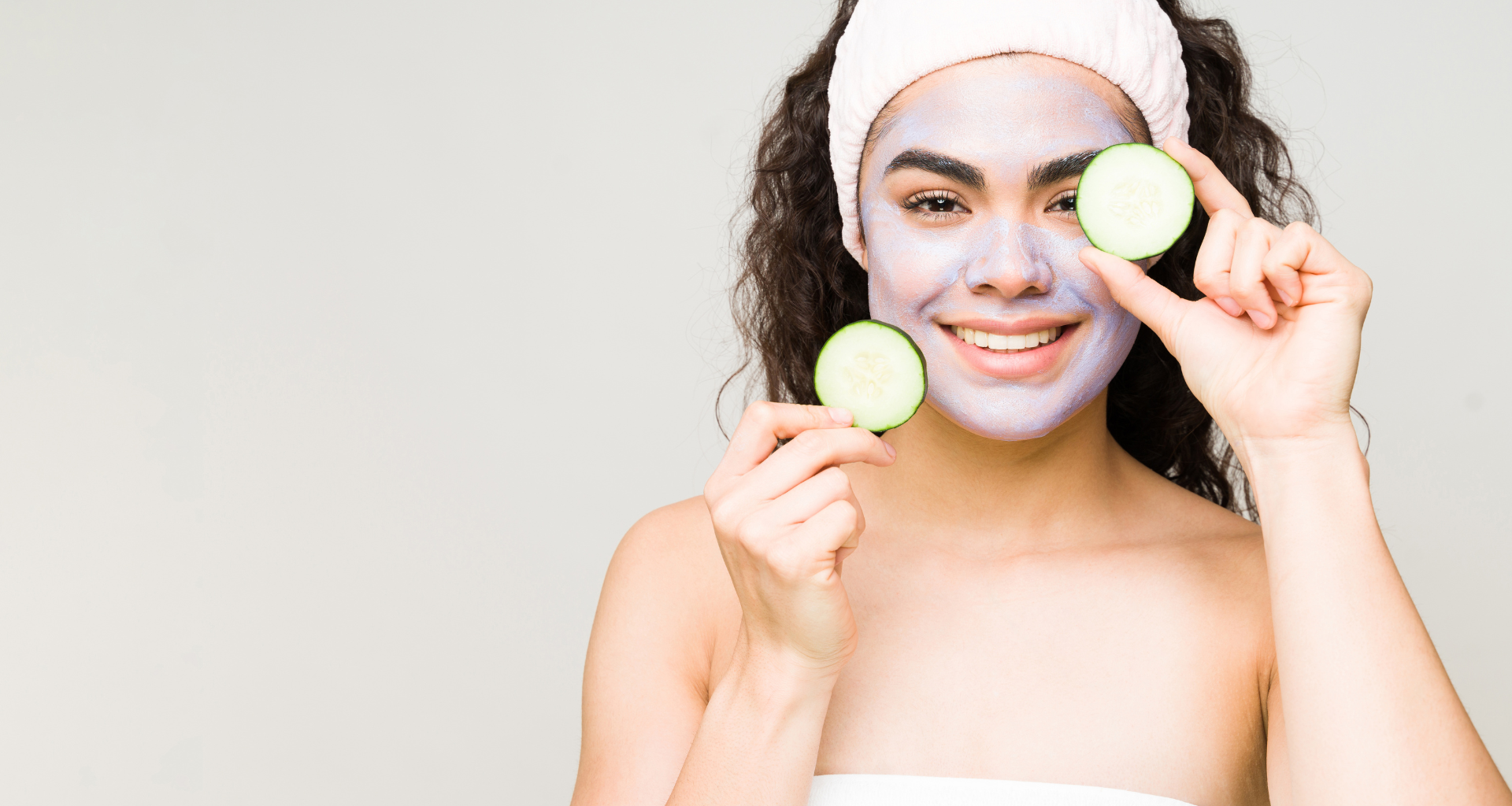Ah, the good old question pops up again: How to exfoliate sensitive skin? Or does it need exfoliation at all? Let me break it to you: all skin types needs exfoliation to reveal fresh and renewed skin. However, exfoliating sensitive skin seems like a risky business, with possible irritation and dryness coming its way. That’s why it seems kind of daunting. And we (sensitive skin people) have all been there: you introduce a new exfoliant to your routine and it wreaks havoc all over.
Believe it or not, there is a good way to exfoliate sensitive skin without horrible breakouts or dry patches. It is just going to take some trial and error to get there. Luckily for us, sensitive-friendly products with gentle ingredients come to the rescue.
And, yes, this is the only no-BS guide you need on how to exfoliate sensitive skin.
In this post, we are breaking down the essentials of exfoliating sensitive skin so you don’t have to.
Step 1: Learn what exfoliation means, really
I am sure you already have some idea about what exfoliation is. And no, it doesn’t involve sugar scrubs or Clarisonic. I believe that if you have landed on this website, you are someone who appreciates skincare on a different level. Or, if you still use scrubs or brushes on your face, no problem! Go get rid of that scrub in your bathroom right now!
Simply put, exfoliating means renewing the skin which happens when dead skin cells are sloughed off. This is also called skin cell turnover due to which your skin maintains its youthfulness and health, in general. Are you still with us? Let’s continue.
There are two types of exfoliation: physical and chemical exfoliation. Physical exfoliators (scrubs, sponges, etc.) contain abrasive particles that like sugar granules, coffee grounds that physically remove dead skins off the surface of the skin. Chemical exfoliants (AHA, BHA and PHAs), however, work by dissolving the “glue” that holds dead skin cells together. It is no secret that physical exfoliators gets a bad rap for being harsh on the skin, so, obviously chemical exfoliators are the way to go.
Step 2: Go with gentle chemical exfoliants
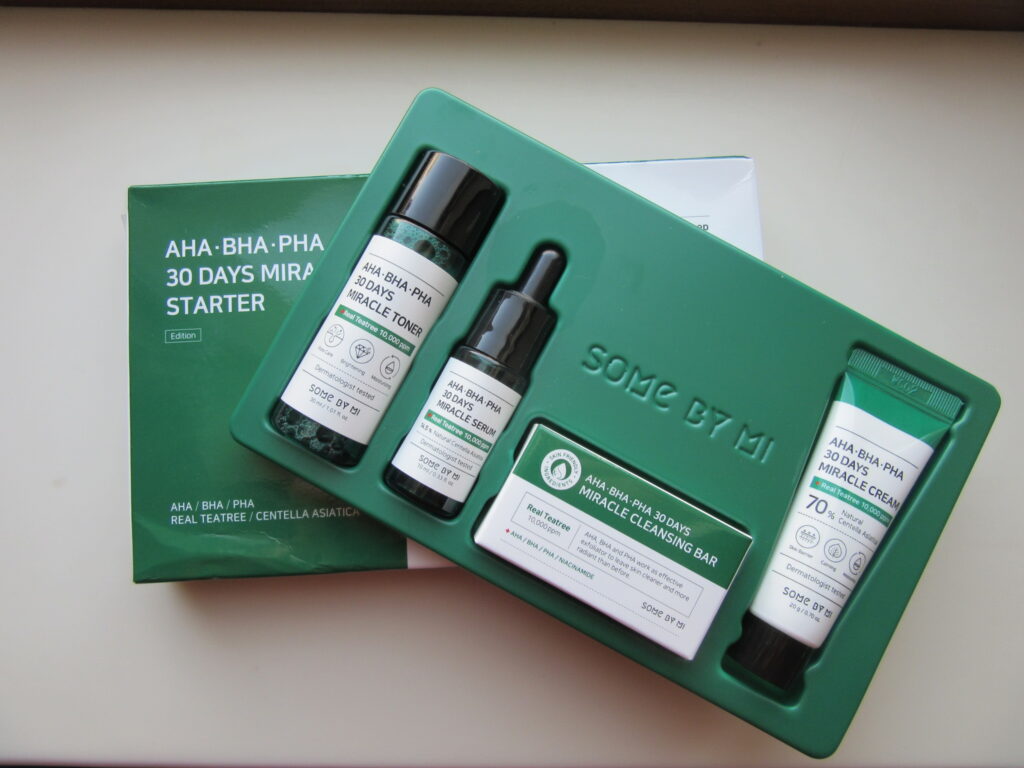
Sensitive skin has a relatively weaker skin barrier than other skin types, so it needs gentle care and support. So, there are AHAs (Alpha-Hydroxy Acids), BHAs (Beta-Hydroxy Acids), and PHAs (poly-hydroxy acids) that are common chemical exfoliants. The latter, meaning PHAs are so much milder and gentler on the skin in comparison with AHA and BHAs. They have antioxidant properties and they penetrate the skin at a much slower rate than their counterparts too. Thus, making the sensitive skin less likely to react or flare up.
PHAs also boast humectant properties, meaning they retain moisture really well. This makes them ideal for dry, sensitive skin. If you are dealing with rosacea or eczema-prone skin, which come with skin sensitivity, the PHAs are your best bet here.
Milder AHAs like lactic acid, and mandelic acid are your friends. If you have frequent acne flareups and sensitive skin, you simply have to incorporate Azelaic acid into your routine. It is non-irritating, great for dark/acne spots, and redness.
BHAs can help with inflammation and acne breakouts in sensitive skin, however, you have to be wary of concentrations since they have a high chance of irritation sensitive skin. More on that, in a minute.
Another great alternative for exfoliating sensitive skin is using enzyme powders. They are two-in-one skincare product that cleanses the skin while providing exfoliation. Derived from fruits and vegetables, enzymes from papaya and pineapple are very popular in skincare. Not only do they provide gentle exfoliation, but they also prevent photoaging and DNA damage.
Step 3: Don’t go overboard with exfoliation
Less is more when it comes to exfoliating sensitive skin. If you have never used a chemical exfoliator or you have sensitive skin, it makes sense to start slow and build up skin tolerance. Top dermatologists also recommend using exfoliant once a week if you have sensitive skin, and gradually work your way up.
Normally, I use mandelic acid 3 times a week but before I started that routine it took me about a month of “once a week” application.
If you prefer using gentle scrubs on your skin, also stick to once a week application.
When you introduce chemical exfoliants to sensitive skin for the first time, you might experience slight itching or burning, which are considered normal. Heck, I even had a reaction to the gentlest ingredients of all, niacinamide, when I first started using it. So, taking into account that AHAs or PHAs are more potent, some reaction is likely to happen. It is called having sensitive skin.
That slight itching or burning should go away after a couple of applications. In case it doesn’t stop using it and talk to your doctor to prevent further irritation. Remember, your skin always knows best!
Step 4: Doing a patch test equals having sensitive skin
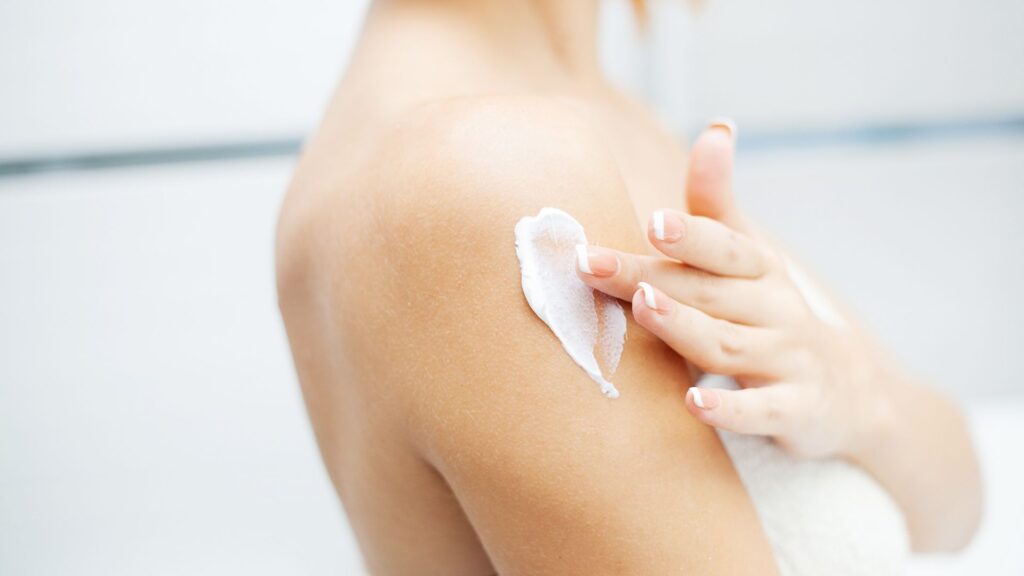
If someone asked me to define sensitive skin, I would tell them doing a patch test! When your skin is reactive to almost anything out there, it becomes a lifetime ritual.
Although I understand that all skin types need some caution before using any product, it is almost a MUST for sensitive skin. If it is exfoliating sensitive skin we are talking about, it becomes even more of a MUST.
According to AAD, American Academy of Dermatology Association, here is how doing a patch test works:
- Choose a quarter-size spot on your skin where is will less likely to be washed off. Your forearm or the bend of your elbow could work.
- Apply the same amount of product you normally would on your face.
- Leave it on for 10 minutes.
- Repeat patch testing two times a day for a week. You can even stretch it to 10 days to be absolutely sure. If you don’t experience any itching, burning or swollen spots, you can go ahead and use the product.
- If your skin flares up, itches and gets a burning sensation, stop using the product IMMEDIATELY. If it burns, use a cool compress or petroleum jelly to calm it down. If complications continue, consult with your doctor.
Step 5: Learn strict no-nos for sensitive skin exfoliation
If you have sensitive skin, there are some words you have to look out for when opting for a skincare product. Exfoliating toner with alcohol in it? No thank you.
Sensitive skin friendly phrases include:
- Alcohol-free
- Fragrance-free
- Hypoallergenic
- Non-comedogenic
- Suitable for sensitive skin
- Dermatologically tested
The percentage of exfoliating products:
The higher the percentage of the product, the more it is likely to have a reaction on your skin. A good rule of thumb is opting for AHAs is sticking to the range 2%-5%, going higher than that can be too irritating for sensitive skin.
As for BHAs, below 2 % would be your best bet here, you don’t want to go higher than that and end up with dryness. If you have acne-prone sensitive skin, using face washes with BHAs (lower concentration of salicylic acid (0.5%) for example) can be more beneficial.
Avoid essential oils and sensitizing ingredients:
When you exfoliate sensitive skin, or choosing products for sensitive skin, you have be knowledgeable as to what ingredients agree with your skin.
Essential oils, harsh and abrasive ingredients, fragrance, and alcohol make the matters worse for sensitive skin.
Certain alcohols (denature alcohol, aka alcohol denat) strips natural oils from the skin, leading to dehydrated and dull-looking skin. This is bad news for all skin types, including oily, acne prone sensitive skin. Learn more about alcohols in skincare here.
We can not stress this enough: Fragrance is not suitable for sensitive skin. And, honestly, there is no reason as to why is should be in your exfoliant. It doesn’t have any upside to it, other than giving a sensorial experience.
People are still conflicted about essential oils in skincare. They do have some benefits to the skin, some of them being anti-inflammatory and anti-bacterial. Some citrus oils with fragrance like tangerine, lemon, lime, grapefruit, and bergamot are problematic for sensitive skin in particular. The solution? Go with non-fragrant oils.
Main non-fragrant oils for sensitive skin are jojoba oil, grapeseed oil, evening primrose oil, rosehip oil. They are rich in antioxidants, fatty acids and they leave the skin feeling soft and smooth.
Step 6: Exfoliate sensitive skin with gentle ingredients
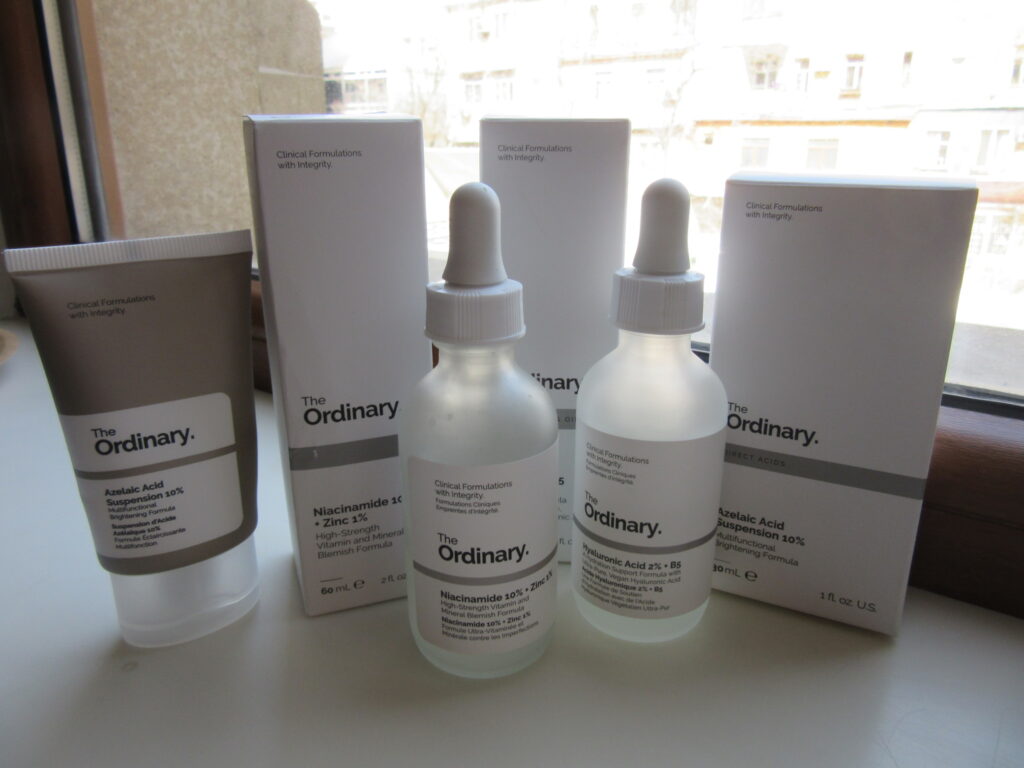
Best exfoliants for sensitive skin come with non-irritating, gentle ingredients. As sensitive skin lacks moisture, and suffers from weak skin barrier, you need ingredients that agree with it. Otherwise you might end up with flared up skin that is further aggravated.
Skincare ingredients like aloe vera, ceramides, hyaluronic acid, shea butter, colloidal oatmeal, Centella asiatica are your biggest allies for sensitive skin. They are hydrating, lightweight and good for hyperpigmentation, redness associated with reactive skin.
And always, I mean, always finish your routine with a moisturizer that contains these gentle ingredients. Or, even better: get exfoliators with these amazing ingredients.
Step 7: Never skip SPF, which is your BFF
No matter the skin type, using chemical exfoliants will make your skin sensitive to the sun. And exfoliating sensitive skin is no exception. As a general rule, BHAs don’t cause sun sensitivity, while AHAs do. There was a study concluding that AHAs’ sun sensitivity can continue for 24 hours after the last time you applied it.
Also, you should use SPF rain or shine, with no interruptions or breaks! Chemical or natural, daily sunscreen protection (SPF30 at least) should always be the last step of exfoliating sensitive skin. The best time to exfoliate is at night, however, never skip the sunscreen in the morning.
Best exfoliants for sensitive skin
It is easy to learn how to exfoliate sensitive skin once you get to know what exfoliators to use.
Here are some picks to make your life easier:
#1. Best one for dry and sensitive skin: The Ordinary Lactic Acid 10% + HA 2% Exfoliating Serum
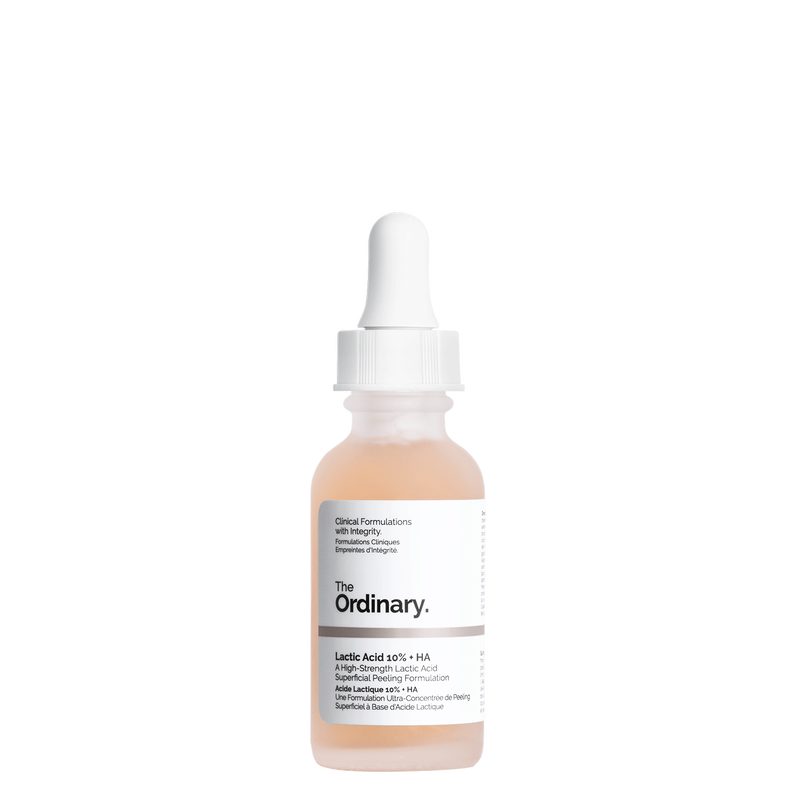
This serum is a skincare community favorite and needs almost no introduction. If you are on a budget and you are looking for some sensitive skin exfoliation, this is the one. Lactic acid is a star exfoliant for sensitive skin due to its gentle nature. Plus, the addition of the ultimate humectant – Hyaluronic acid makes it even a more powerful combo. Although the instructions say to use it once a day, I recommend sticking do applying it once a week for sensitive skin.
#2. Best exfoliant for redness: By Wishtrend – Mandelic Acid 5% Skin Prep Water
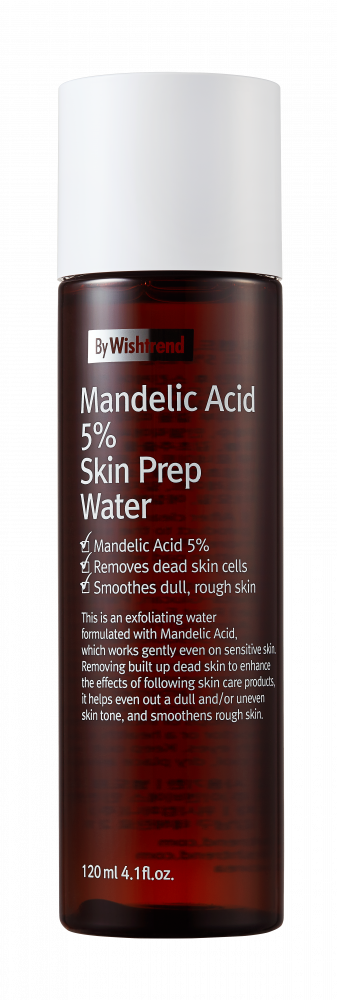
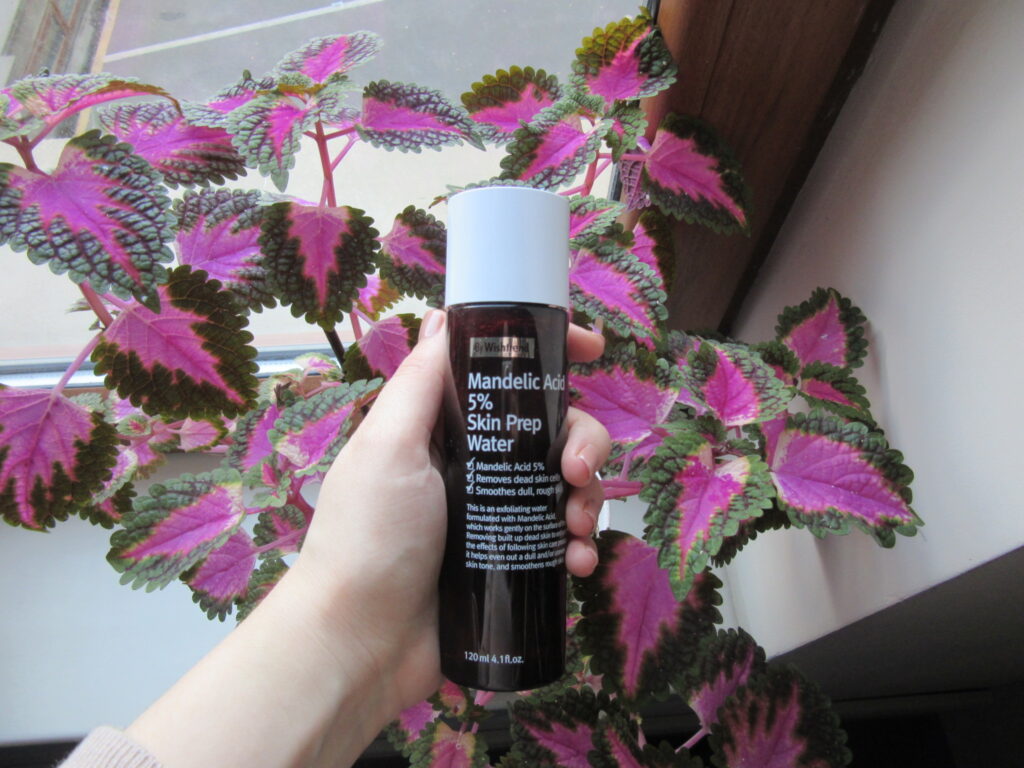
Here comes my favorite mandelic acid exfoliator of two years! I have been using this one for a while, y’all. This one caught my eye a long time ago, for being a gentle exfoliant infused with hydrating ingredients like panthenol, Centella, and Beta-Glucan.
I use it 3 times a week after cleansing an toning. It never made me break out or dry out, just a very good product that can be for beginners who learn how to exfoliate sensitive skin. It helped me with redness and blemishes. A total Korean exfoliation powerhouse for sensitive skin!
#3. Best for acne-prone sensitive skin: Dermalogica Daily Microfliant Exfoliator
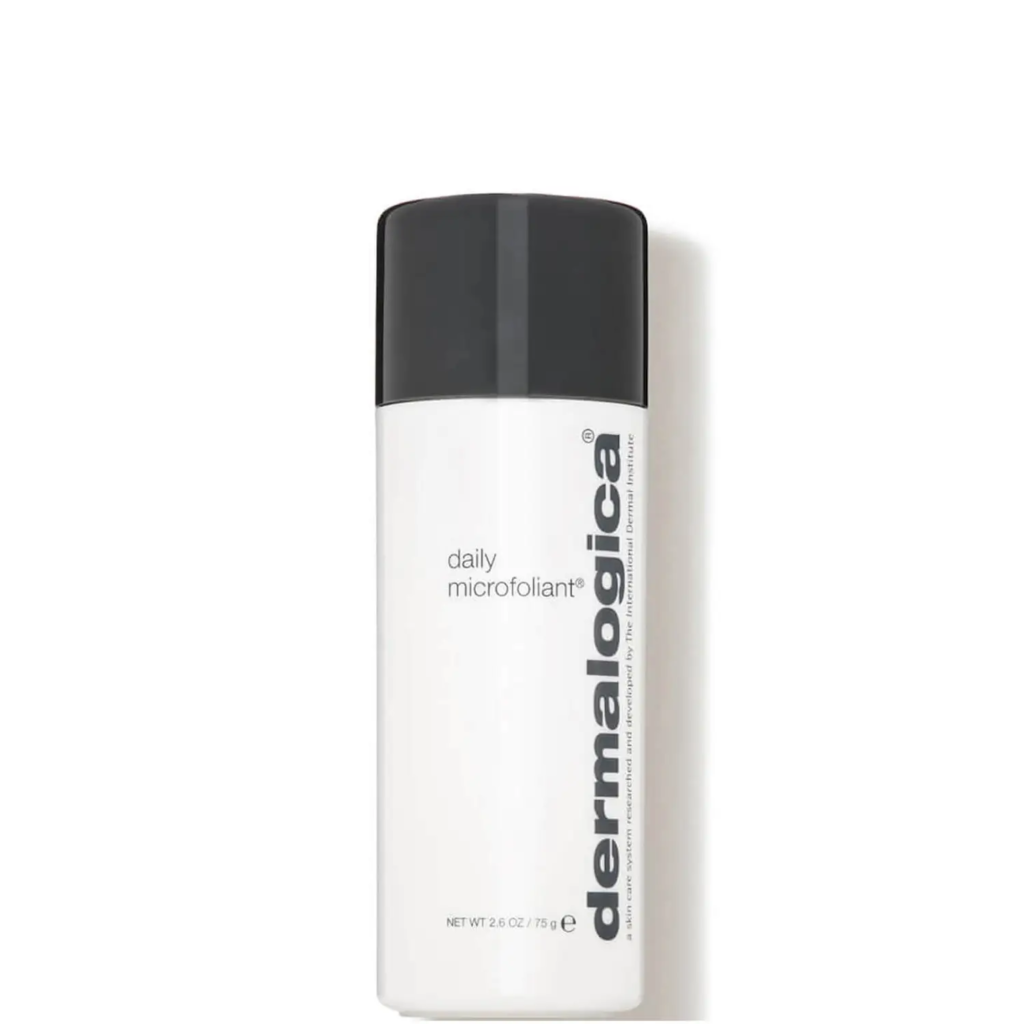
Another exfoliant with a cult following among the best exfoliants for sensitive skin. This one by Dermalogica checks all the boxes for sensitive skin: fragrance-free, alcohol-free, and contains soothing agents like rice, colloidal oatmeal, and allantoin. It also has salicylic acid to treat breakouts, while the others support the skin barrier. Plus, it has the enzymes we talked about, specifically, papain enzymes.
I know it is a bit on the splurge side compared to The Ordinary serum, but it is worth every penny for the amazing results!
#4. Best PHA toner for sensitive skin: The INKEY List Polyhydroxy Acid (PHA) Gentle Exfoliating Toner
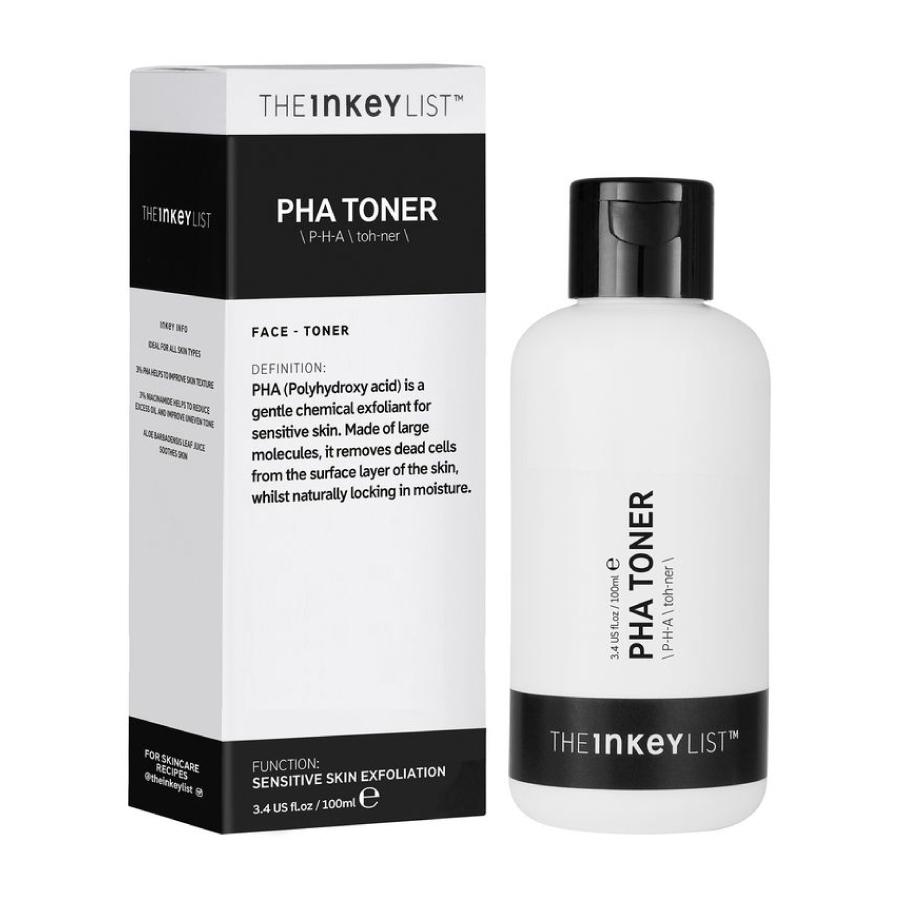
This toner is one of the best-selling products of The INKEY List, and for a solid reason. It is known that the brand offers a lot of products for sensitive skin, including the Oat Cleansing Balm that I have reviewed before.
As we mentioned earlier, PHAs are the best option among other chemical exfoliants for sensitive skin. They gently remove dead skin cells off the surface of the skin and brighten dark spots with the help of Vitamin B3, aka Niacinamide. Another feel-good ingredient here is Aloe which joins the sensitive skin exfoliation party!
Final take
Learning how to exfoliate sensitive skin requires some time and effort. The reality is if you have sensitive skin (been there, done that) you have to be the skincare detective. I mean that in the best possible way. Because sensitive skin requires it, it needs to be aware of gentle ingredients, and low-percentage exfoliators that won’t leave it dry or irritated.
Exfoliating sensitive skin also needs some TLC. Also, adopting almost a lifetime habit of patch testing!
So, there you have it, the step-by-step guide on how to exfoliate sensitive skin. No matter what, listening to your skin comes always at the top of all steps and guides! (and yes, in case you haven’t heard it today, along with patch testing)

